Giddy up! That sounds great! I’ll shoot some flat on it and call it done. Thanks for the input.
I’d stick with the black. I would not mix it up at this stage.
Having never seen a late 40’s Bell aircraft wireing bundle I can’t
say for sure but Scottrc’s logic sounds good.
Gamera,
Thanks for the tip! I’ll pick some up.
Scottrc,
Have fun with the SV! I built, and flew, mine about 10 years ago.
The Rocketry Forum has TONS of great info on building it.
I converted mine to a 5 engine cluster with good results.
Oh man… we are in for a treat. A scratch build. [Y]
Bakster> That’s a really cool story about the telescope! A one in a million… [:)]
Mach71> Thanks, and see you in 10 days! Be safe!
Scott> That is some serious scratch-building you’re attempting! Look forward to seeing it come together.
My own project was mostly gluing those folding panels together (that super glue sure takes a long time to harden), and beginning to mask things for paint, which tomorrow (weather permitting) I’ll begin spraying on the first coat of white. Plus some other things like the SM engine nozzle (black and aluminum) and SM heat shield (gray and aluminum). Hope things turn out okay. Oh, and that D-7 is masked up ready for a 2nd color.
That’s it for today! Hope everyone is surviving the cold weather.
Gary
Today in Space History:
1960 January 21 - . 14:23 GMT - . Launch Site: Wallops Island. Launch Complex: Wallops Island LA1. Launch Vehicle: Little Joe 1.
- Mercury LJ-1B - . Nation: USA. Agency: NASA. Spacecraft: Mercury. Apogee: 14 km (8 mi).
- Little Joe 1-B (LJ-1B) was launched from Wallops Island with a rhesus monkey, ‘Miss Sam,’ aboard. Test objectives for this flight were the same as those for Little Joe 1 (LJ-1) in which the escape tower launched 31 minutes before the planned launch, and Little Joe 1-A (LJ-1A), wherein the dynamic buildup in the abort maneuver was too low. A physiological study of the primate, particularly in areas applying to the effects of the rapid onset of reverse acceleration during abort at maximum dynamic pressure, was also made. In addition, the Mercury helicopter recovery system was exercised. During the mission, all sequences operated as planned; the spacecraft attained a peak altitude of 9.3 statute miles, a range of 11.7 statute miles, and a maximum speed of 2,021.6 miles per hour. Thirty minutes from launch time, a Marine recovery helicopter deposited the spacecraft and its occupant at Wallops Station. ‘Miss Sam’ was in good condition, and all test objectives were successfully fulfilled.
Scott: That’s friggin’ awesome!!! Looking forward to watching her come together!
Bakster: That is a very cool telescope story. Very lucky on your part and one hell of a memory to cherish!
I had to abort my painting today. The weather was not cooperating. Too cool and too windy. I did attempt to paint the second color on the D-7 model, and the interior of the LM Storage Area. I’m afraid I got some “orange peel” effect on the D-7, so I decided that was it for any further attempts. I’m letting them dry (inside) to see what damage if any.
Meanwhile, I’ll just keep plugging away at the small things, such as fixing a LM landing leg that’s broken, working on the astronaut figures, etc. Not sure if there will be anything else to report tonight.
Gary
Today in Space History:
1968 January 22 - . 22:48 GMT - . Launch Site: Cape Canaveral. Launch Complex: Cape Canaveral LC37B. LV Family: Saturn I. Launch Vehicle: Saturn IB.
-
Apollo 5 - . Payload: Apollo LM-1. Mass: 14,360 kg (31,650 lb). Nation: USA. Agency: NASA Houston. Program: Apollo. Class: Moon. Type: Manned lunar lander. Spacecraft: Apollo LM. Decay Date: 1968-02-12 . USAF Sat Cat: 3107 . COSPAR: 1968-007B. Apogee: 374 km (232 mi). Perigee: 169 km (105 mi). Inclination: 31.6000 deg. Period: 89.90 min.
-
NASA launched - the first, unmanned LM flight - on a Saturn IB from KSC Launch Complex 37B at 5:48:08 p.m. EST. Mission objectives included verifying operation of the LM structure itself and its two primary propulsion systems, to evaluate LM staging, and to evaluate orbital performances of the S-IVB stage and instrument unit. Flight of the AS-204 launch vehicle went as planned, with nosecone (replacing the CSM) jettisoned and LM separating. Flight of LM-1 also went as planned up to the first descent propulsion engine firing. Because velocity increase did not build up as quickly as predicted, the LM guidance system shut the engine down after only four seconds of operation, boosting the LM only to a 171 x 222 km orbit. Mission control personnel in Houston and supporting groups quickly analyzed the problem. They determined that the difficulty was one of guidance software only (and not a fault in hardware design) and pursued an alternate mission plan that ensured meeting the minimum requirements necessary to achieve the primary objectives of the mission. The ascent stage separated and boosted itself into a 172 x 961 km orbit. After mission completion at 2:45 a.m. EST January 23, LM stages were left in orbit to reenter the atmosphere later and disintegrate. Apollo program directors attributed success of the mission to careful preplanning of alternate ways to accomplish flight objectives in the face of unforeseen events.
2003 January 22 - .
-
Last transmission received from Pioneer 10 - . Nation: USA. Spacecraft: Pioneer 10-11.
-
The signal received was very faint with no telemetry received. NASA’s Deep Space Network (DSN) did not detect a signal during the final contact attempt on 7 February 2003. The last time a Pioneer 10 contact returned telemetry data was 27 April 2002. NASA had no additional contact attempts planned for Pioneer 10. Pioneer 10 was at 82 AU, or 12.3 billion km from Earth. The last signal took 11 hours and 20 minutes to reach earth. The spacecraft was headed in the direction of the star Aldebaran, 68 light-years away. It would reach the vicinity of the red giant star in about two million years.
Project Report:
Fixed the LMs broken landing leg today. Looks like it will hold. Began work on the couches for the CM, added padding to the seats and began painting the astronauts. I considered making the suits silver since they’re closer to Gemini suits than Apollo, but went with white instead. Folding doors continue to give me fits. They’re a bit warped from age, so I’m trying to straighten them a bit. Not sure when my next break in the weather for painting the major pieces will be. I did order a replacement color ink cartridge today, so I should be able to print decals and instrument panels soon.
Mission Director (GAF)
Today in Space History:
1969 January 23 - .
- Cosmonauts shot at in assassination attempt - . Nation: Russia. Related Persons: Brezhnev, Feoktistov, Khrunov, Nikolayev, Shatalov, Volynov, Yeliseyev. Program: Soyuz. Flight: Soyuz 4, Soyuz 4/5, Soyuz 5.
- The assassination attempt is made on Brezhnev, instead hitting the cosmonaut’s car, on the way to the Kremlin. A muted press conference follows. All the cosmonauts are there, except Feoktistov, who is on honeymoon with his second wife, and Nikolyaev, who has the Hong Kong flu.
1970 January 23 - . LV Family: Shuttle. Launch Vehicle: Space Shuttle.
- NASA Houston in-house study of shuttle concepts - . Nation: USA.
- The study was in an attempt to resolve disputes between the centres as to the best approach. Houston’s Faget straight-wing two-stage vehicle was in competition with concepts from other centres - recoverable versions of Saturn boosters, and an advanced single-stage-to-orbit Aerospaceplane. Payload for the Faget vehicle was to be only 5,700 to 6,800 kg to low earth orbit, and the system was to be operational by the end of 1975, after the last Apollo flight.
Project Report:
Not much happening at this time due to weather. Cold conditions are hampering construction operations. [:)] (Jeez! The breaker for my HVAC keeps kicking off! Need a repair guy!) Work on the base for the Apollo model continues, and I am cutting ribs to go along the side, while a top has been cut out. I intend to scribe it into panels for painting. Want to see how it turns out. Painting on the astronauts is coming along slowly. Detail work has begun.
Mission Director (GAF)
Today in Space History:
1969 January 25 - . Launch Vehicle: N1.
-
Apollo vs Ye-8-5 - . Nation: Russia. Program: Lunar L3, Luna, Apollo. Flight: Apollo 9. Spacecraft Bus: Luna Ye-8. Spacecraft: Luna Ye-8-5.
America is preparing Apollo 9 for flight, and Kamanin muses that the Soviet reply will be the N1 and Ye-8-5, neither of which is proven or reliable. The Soviet Union would have a better chance of sending a manned L1 on a flight around the moon during the first quarter of 1969. Meanwhile Mishin’s bureau has a new L3M lunar lander on the drawing boards. This will land 4 to 5 men on the moon, but require two N1 or seven UR-500K launches to assemble in orbit.
2004 January 25 - .
I actually feel like asking “I wonder where Gunter Wendt?” Kinda lonely around here.
Project Report:
No painting, and just trying to stay warm with the heat pump on the fritz. Got a small space heater, and the apartment has not fallen below 66 degrees (with a nighttime low of 25. Luckily, the carbon dioxide levels have remained constant. [:D] Monday I’ll have to get the apartment people to send a repair guy out.
I’ve been cutting wooden sticks and gluing them around the base. Trying to replicate the look of the Apollo launch platform. Still got a couple of dozen to attach. Still, once the top is detailed and painted gray, I think it will look rather good.
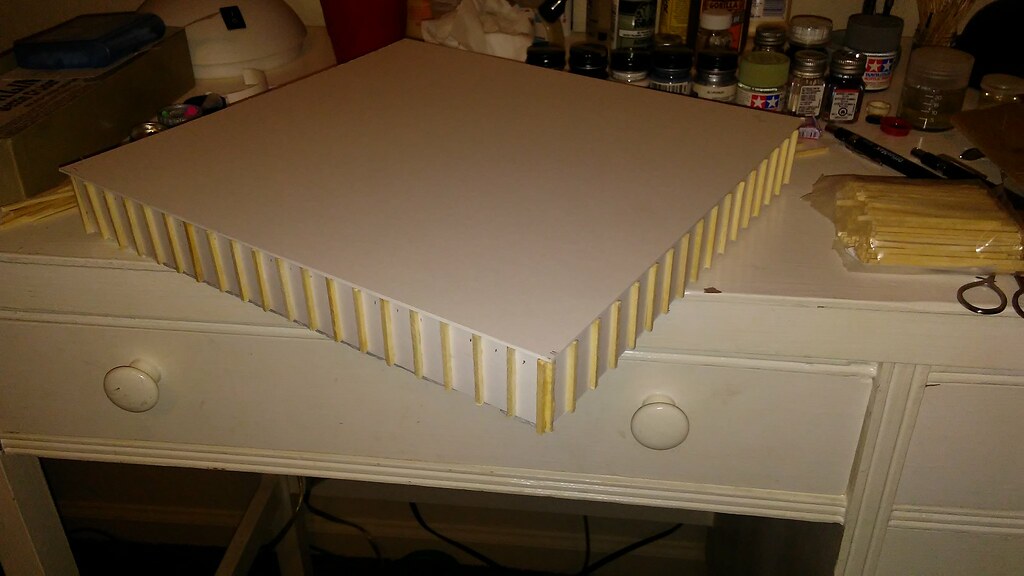
Mission Director (GAF)
Today in Space History:
1956 January 26 - .
- Satellite symposium. - . Nation: USA. Related Persons: Van Allen. Symposium on “The Scientific Uses of Earth Satellites” held at the University of Michigan under sponsorship of the Upper Atmosphere Rocket Research Panel, James A. Van Allen of the State University of Iowa, Chairman.
1962 January 26 - . 20:30 GMT - . Launch Site: Cape Canaveral. Launch Complex: Cape Canaveral LC12. LV Family: Atlas. Launch Vehicle: Atlas Agena B. FAILURE: Agena B second stage guidance system failure. Failed Stage: U.
- Ranger 3 - . Payload: NASA P-34 (RA-3). Mass: 327 kg (720 lb). Nation: USA. Agency: NASA. Program: Ranger. Class: Moon. Type: Lunar probe. Spacecraft Bus: Ranger. Spacecraft: Ranger 3-4-5. USAF Sat Cat: 221 . COSPAR: 1962-Alpha-1.
- Lunar impact probe; missed the moon by 36,874 km and went into solar orbit. A malfunction in the booster guidance system resulted in excessive spacecraft speed. Reversed command signals caused the telemetry antenna to lose earth acquisition, and mid-course correction was not possible. Some useful data were obtained from the flight. Of four scientific experiments only one was partially completed: gamma-ray readings of the lunar surface. Attempts to relay television pictures of the moon and to bounce radar signals off the moon at close range were unsuccessful.
1967 January 26
- NASA planned to form an “embryonic space station” in 1968-69 by clustering four AAP payloads. - . Nation: USA. Related Persons: Mueller. Spacecraft Bus: Skylab. Spacecraft: Orbital Workshop.
- At a NASA Hq briefing, Associate Administrator for Manned Space Flight George E. Mueller stated that NASA planned to form an ‘embryonic space station’ in 1968-69 by clustering four AAP payloads launched at different times. The first mission would be the launch of a manned spacecraft followed several days later by a spent S-IVB stage converted into an OWS. After the two spacecraft had docked, the crew would enter the Workshop through an airlock. Twenty-eight days later they would passivate the OWS and return to Earth in their spacecraft. In three to six months, a second manned spacecraft would be launched on a 56-day mission to deliver a resupply module to the OWS and to rendezvous with an unmanned ATM, the fourth and last launch of the series. The cluster would be joined together using the multiple docking adapter. Emphasizing the importance of manning the ATM, Mueller said that ‘if there is one thing the scientific community is agreed on it is that when you want to have a major telescope instrument in space it needs to be manned.’
Been going through a bunch of stuff and found these. Got quite a few, but not a complete set. [:(]
Anyone remember these?
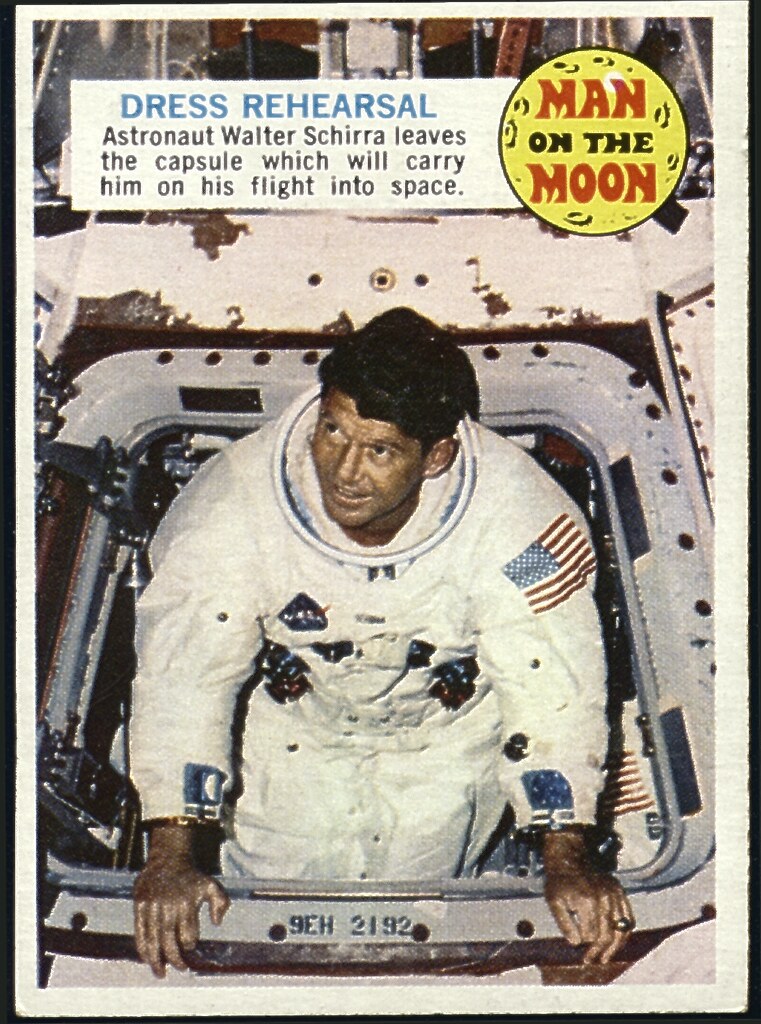
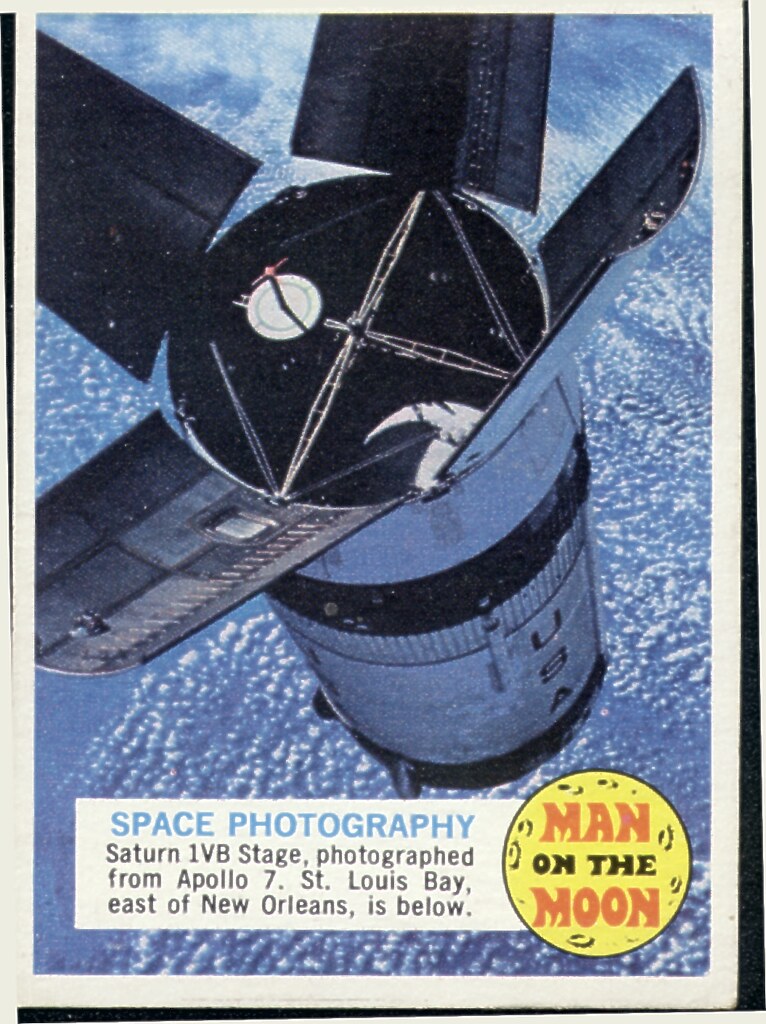
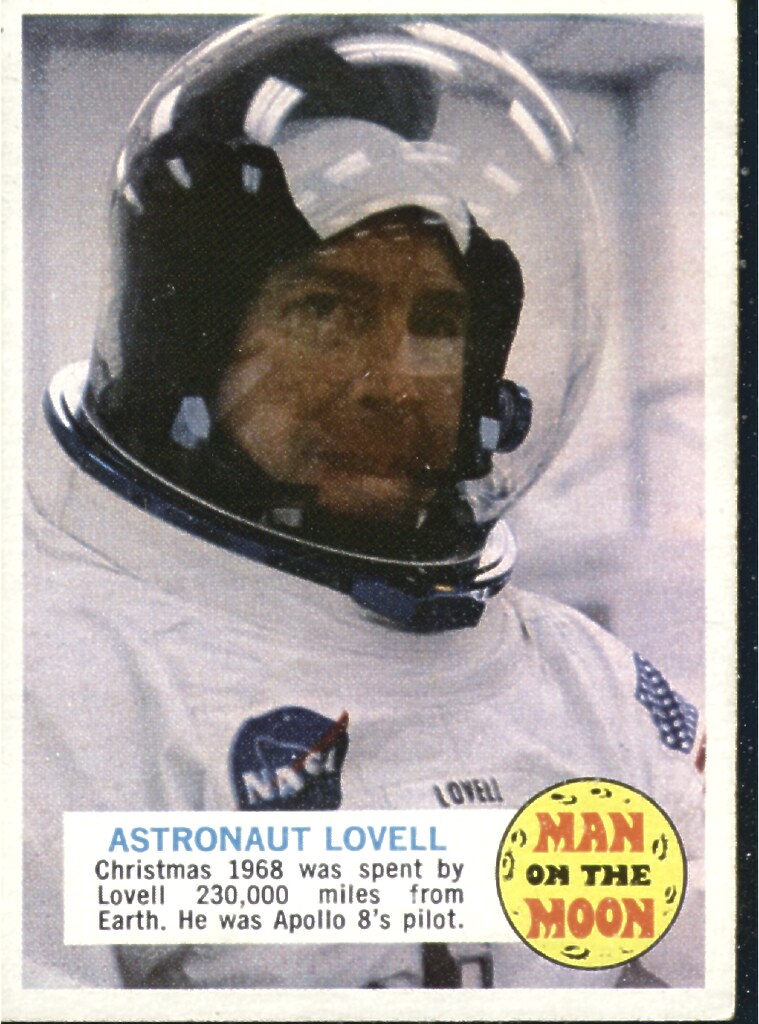
Gary
Hey Gary-- for some reason I didn’t get an email about your post. Here we go again. Son of a …
I have to say that I don’t remember those cards. Did they come with bubblegum?
My X-1 office is pretty much done.
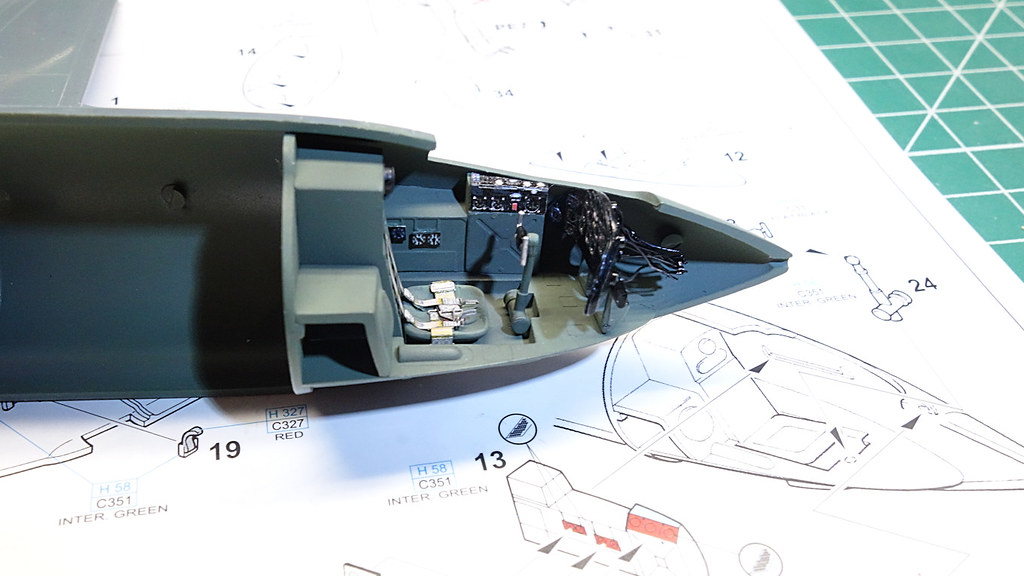
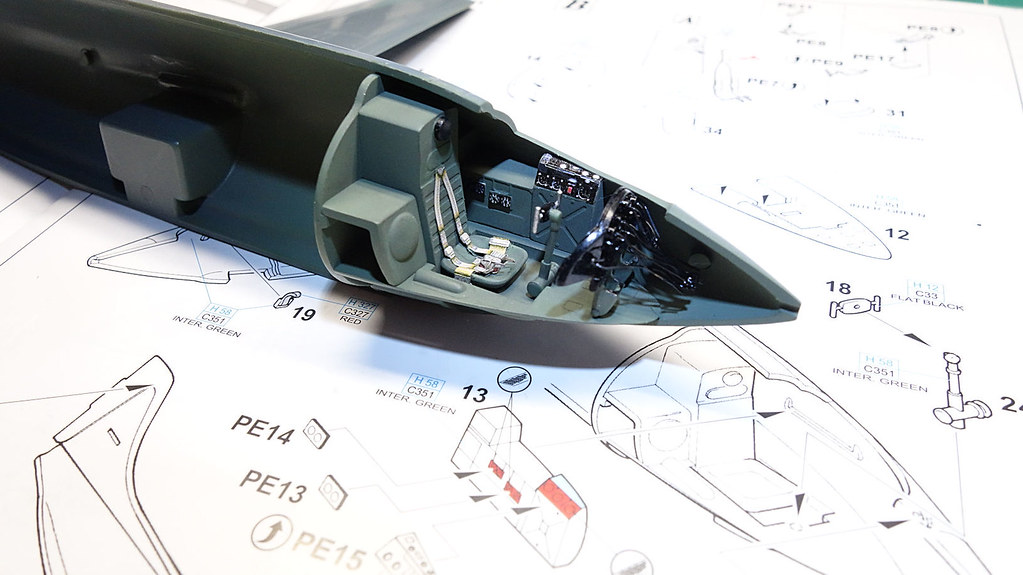
The fuselage is not glued, just for show.
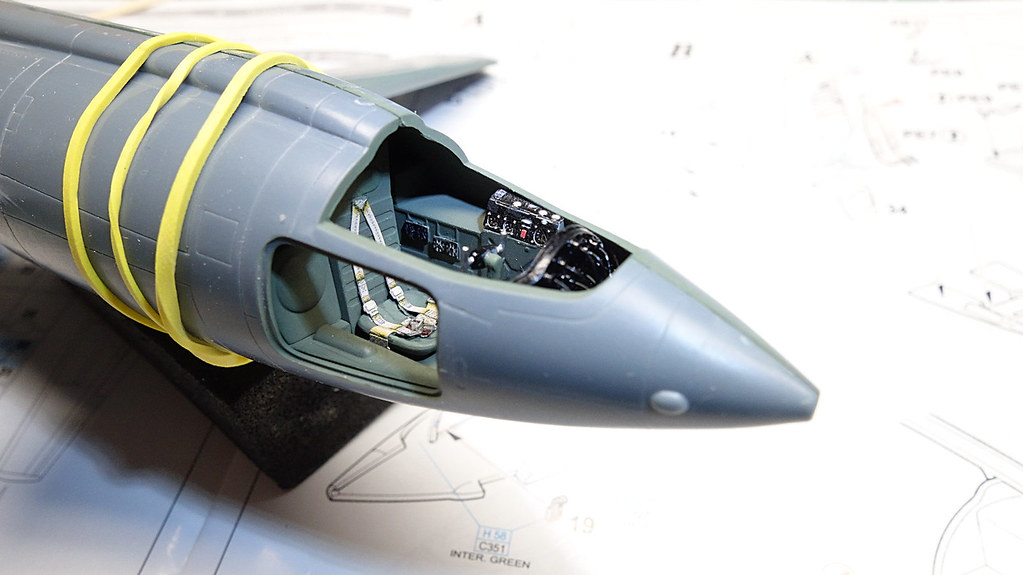
Next on the roster? I decided to make an LED light cluster and mount them behind the jet exhaust. I don’t know if it’ll be worth the effort in terms of effect. What the heck–why not try it. It won’t add too much of a time suck.
WOW, your X-1 is looking X-cellent!
Ben
Bakster> Yep, the e-mail notification is down again. Bummer! And yes, those are bubblegum cards from the 70s. A set of around 100.
Your X-1 pit is looking fantastic! I bet the led lighting will look just as good!
Gary
PS> Hoping tomorrow will be nice and allow me to get some painting done before the big storm hits Tuesday. Still having to watch the heat pump, however. Heat is a bit iffy.
Today in Space History:
In Memoriam:
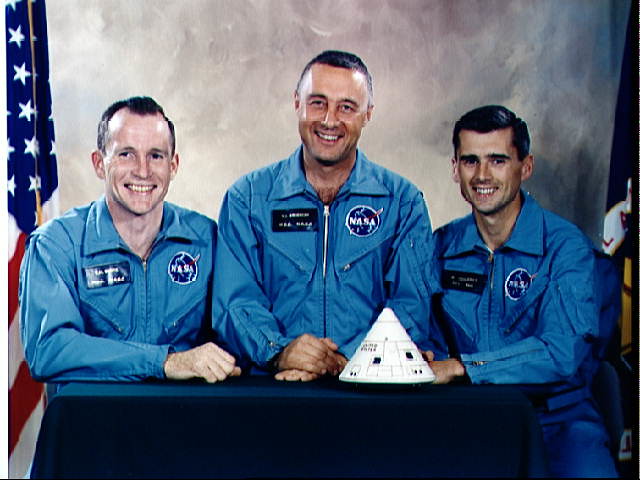
1967 January 27 - . Launch Site: Cape Canaveral. Launch Complex: Cape Canaveral. LV Family: Saturn I. Launch Vehicle: Saturn IB.
-
Apollo 204 - . Call Sign: Apollo 1. Crew: Chaffee, Grissom, White. Backup Crew: Cunningham, Eisele, McDivitt, Schirra, Schweickart, Scott. Payload: CSM-012. Nation: USA. Related Persons: Chaffee, Cunningham, Eisele, Grissom, McDivitt, Schirra, Schweickart, Scott, White. Program: Apollo. Flight: Apollo 204. Spacecraft: Apollo CSM, Apollo Lunar Landing, CSM ECS, CSM Electrical.
The first manned flight of the Apollo CSM, the Apollo C category mission, was planned for the last quarter of 1966. Numerous problems with the Apollo Block I spacecraft resulted in a flight delay to February 1967. The crew of Virgil I. Grissom, Edward H. White II, and Roger B. Chaffee, was killed in a fire while testing their capsule on the pad on 27 January 1967, still weeks away from launch. The designation AS-204 was used by NASA for the flight at the time; the designation Apollo 1 was applied retroactively at the request of Grissom’s widow.
Thanks Ben!
Thanks Gary…
Those were the days when just a few bucks got a person so much. Those cards are cool, Gary. Who knows… I may have bought them too, I just don’t recall. I used to buy bubblegum cards as well. I don’t have a single one of them of them now. They are long gone. Kudos that you saved them!
I just hate the thought of losing those men in Apollo 1, especially that way.
Poor Gus just had all kinds of bad luck in the program.
Gary: Cool work there on the platform. It’s going to look perfect under a coat of paint.
And cool cards there, funny I always remember Schirra from an aspirin commercial he did back in the '80s…
Bakster: Great job there on the X-1 cockpit. And the LED sounds awesome. Are you going to add some cotton balls for the smoke billowing out of the rocket?
BTW: I visited the Apollo 1 fire pad years ago on a NASA tour. One of the most friggin’ depressing places around. Turned cloudy and overcast when we pulled up…